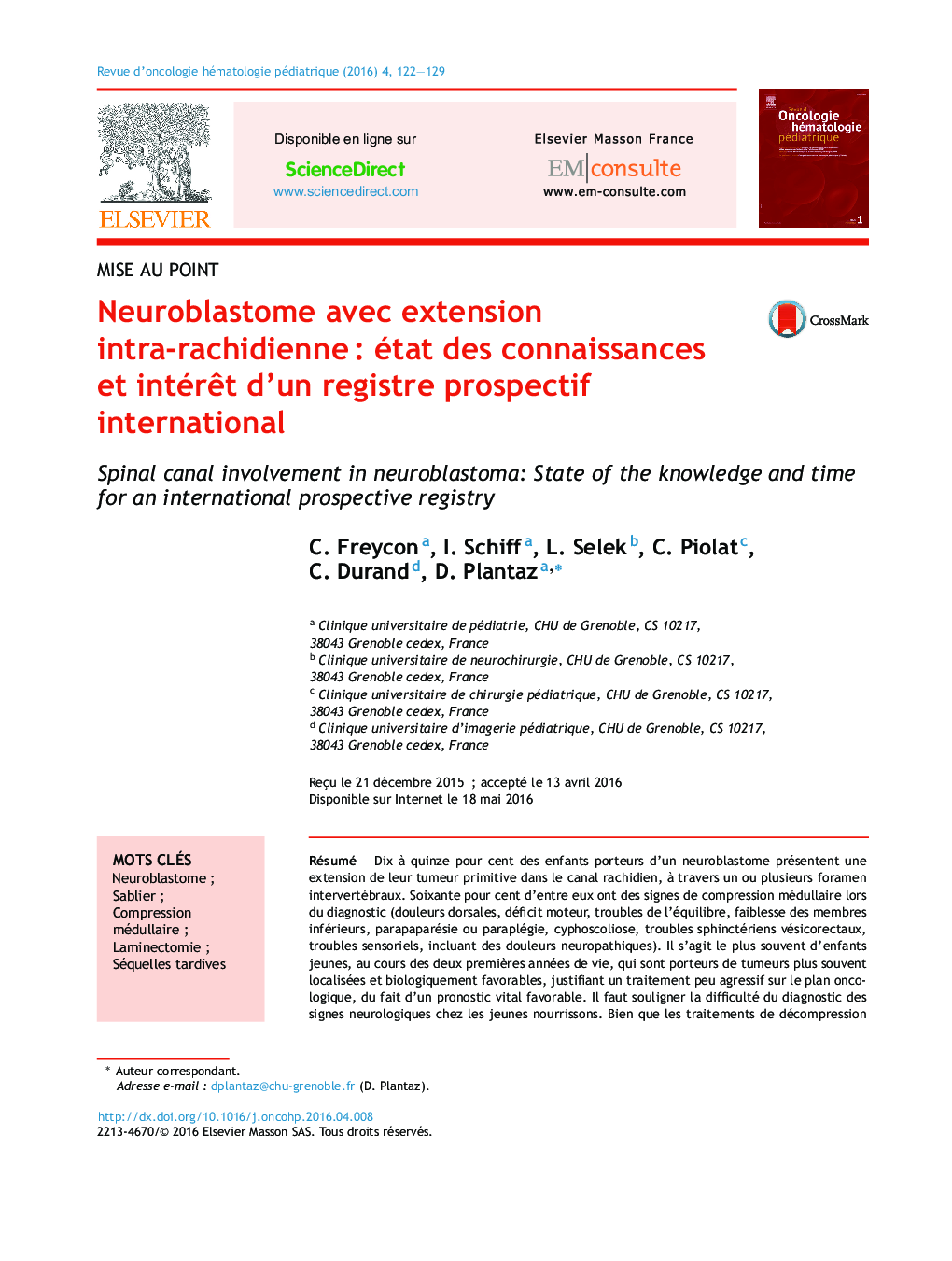| Article ID | Journal | Published Year | Pages | File Type |
|---|---|---|---|---|
| 3333203 | Revue d'Oncologie Hématologie Pédiatrique | 2016 | 8 Pages |
Abstract
Up to 10-15% children with neuroblastoma have direct tumour extension through the intervertebral foramen into the spinal canal. Sixty percent have symptoms of spinal cord compression (back pain, motor dysfunction, gait disturbance, limb weakness, paralysis, kyphoscoliosis, bladder and bowel and sensory disturbance including pain) at presentation. These patients are generally young, within the first 2 years of life, have biologically favourable disease and would often otherwise require minimal therapy for their neuroblastoma and generally have excellent survival. Symptoms and signs of spinal canal compression may be under recognised in young infants. Although many patients experience symptom improvement with effective therapy (chemotherapy or decompressive neurosurgery), patients with neuroblastoma and spinal cord involvement (SCI) are at risk of long standing neurologic (motor, bowel, bladder, sensory and pain) and orthopaedic consequences. Recent retrospective studies have shown unacceptably high rates (60-75%) of long term neurologic and orthopaedic disability emphasising the importance of focusing on this subgroup of patients to better identify important patient and treatment related factors to improve current management strategies. To address this need the European Neuroblastoma Research Network (SIOPEN) has developed an international, multi-centre prospective registry study of peripheral neuroblastic tumours presenting with spinal canal involvement. The primary objective is to prospectively collect data on patients with neuroblastoma and SCI to evaluate the combined effects of different risk factors on the eventual neurologic and orthopaedic outcomes. It is hoped that this will lead to better treatment guidelines for the management of symptomatic SCI with reduced long-term functional sequelae.
Keywords
Related Topics
Life Sciences
Immunology and Microbiology
Immunology
Authors
C. Freycon, I. Schiff, L. Selek, C. Piolat, C. Durand, D. Plantaz,
